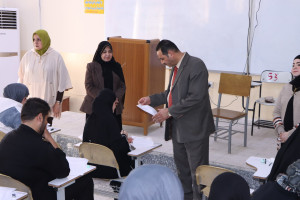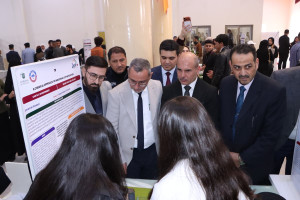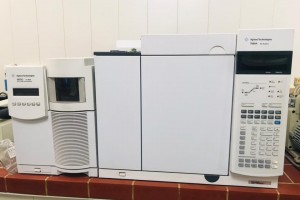
A research team from the Department of Physics and the Department of Chemistry/ College of Education for Pure Sciences/ University of Basra published a research team consisting of Prof. Dr. Jaseb Abdul-Hussein Mishari, Prof. Dr. Qusay Muhammad Ali Hassan, Prof. Dr. Hassan Abdullah Sultan from the Department of Physics, Prof. Tariq Ali Fahd, Prof. Dr. Adel Maaleh Damad and the teacher Dr. Nabil Rahim Hamid from the Department of Chemistry, a research entitled "Synthesis, structural characterization and optical nonlinear properties of two azo- β-diketones"
Abstract
Synthesis, structural characterization and Density Functional Theory (DFT) studies of two azo-β-diketones, (3-((4-bromophenyl)diazenyl)pentane-2,4‑dione and 2-((4-bromophenyl) diazenyl)-1-phenylbutane-1,3‑dione prepared by coupling reaction of dizonium salt of 4-bromoaniline with acetylacetone and benzoylacetone. The products are characterized by FTIR, Mass, 1H NMR and 13CNMR spectra. Density Functional Theory with B3LYP method in the level of basis sets 6–311 G (d,p) is used to optimize the geometry of the synthesized azo-β-diketone dyes. The energy of the highest occupied molecular orbital (HOMO), lowest unoccupied molecular orbital (LUMO) and ∆E gap energies from the DFT/B3LYP - 6‐311G(d,p) basis set are calculated. The lower value for ∆E (HOMO-LUMO) gap energy is 0.14756 eV of the first compound. The Z-scan method is adopted to study the optical nonlinear properties of the two compounds using a continuous wave laser beam at 473 nm wavelength. The two compounds showed high nonlinear refractive indexes of the order of 10−8 cm2/W. We showed that the origin of nonlinearity of the two samples is thermal. The two compounds showed the properties of the optical limiter with limiting threshold values of 15.5 and 16.7 mW respectively. A mechanism for the optical limiter that the two samples showed is discussed.







